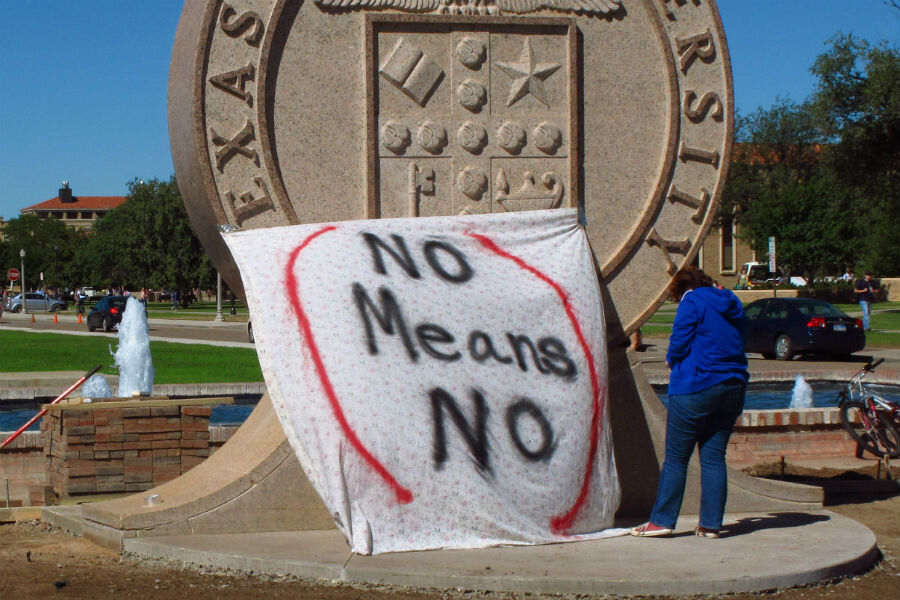How activism has changed the way universities deal with rape on campus
Loading...
New statistics on reported rapes on university campuses released by the Department of Education might look, on first glance, damning for the schools with the highest numbers. Considerable prestige is on the line: two Ivy Leagues (Brown University and Dartmouth College) and another school known as a bastion of left-leaning politics (Wesleyan University) figure among the top five.
But advocates caution that the new federal stats only tell part of the story.
“It’s important to remember that the statistics aren’t reflective of actual rates, just crimes reported to campus authorities or security, and only around campus,” says Alison Kiss, executive director of the Clery Center, a campus-security organization, in a phone interview.
In fact, she adds, campuses with a higher number of incidents logged might simply be taking a more proactive approach to the issue.
“These campuses are the ones I’m more intrigued at looking at if I send my child to school, because it means campuses are coming forward and reporting," says Kiss. "It’s not an easy feat.”
A number of variables skew the meaning of the stats. First, students have to file a report with their university. According to a 2015 study conducted by the Association of American Universities, that happens in only 28 percent of serious incidents. Second, the university has to report it. And if the student turns to a campus counselor, where conversations are confidential, the counselor isn’t obligated to turn in a report to be filed with the rest of complaints on campus.
The data reflects the uneven successes of campus activists who in recent years have pushed universities to respond more aggressively to sexual crimes on campus. In returning the issue to the national spotlight, they’ve built on a framework pioneered by feminists in the late 1980s, who battled to change Americans’ very notions of rape.
At the time, most Americans believed that rape was something strangers did to women. Then came a series of publications – a 1985 study by Kent State psychology professor Mary Koss, and the 1987 Susan Estrich book “Real Rape”, among others – arguing that most of the time, sexual assaults were actually committed by acquaintances. In the span of just a few years, feminists turned ideas about rape on their head. Federal legislative reforms followed, particularly in the 1990s, when the Clery Campus Crimes Act required universities to report information on campus crime to the government.
Current activists’ efforts have spurred legal reform at the state level too, in addition to spurring an advocacy campaign by President Obama. In September 2014, California passed a law setting standards for sexual consent on college campuses, with New York following not long after.
The amount of attention focused on the issue has also stirred the federal bureaucracy. As The Washington Post noted, this year marks the first time the Department of Education has published campus reports of rape as a separate statistic, rather than lumping them into the broader category of “forcible sex offenses.” And the definition of rape used is that of the FBI – not those of states, which vary.
But as the unreliability of the just-released data suggests, cases often stay buried, or dealt with behind closed doors. And revealingly, students still don’t necessarily trust their universities to act: In the Association of American Universities survey from 2015, over 63 percent said they didn’t think campus officials would take them seriously if they reported being raped.







